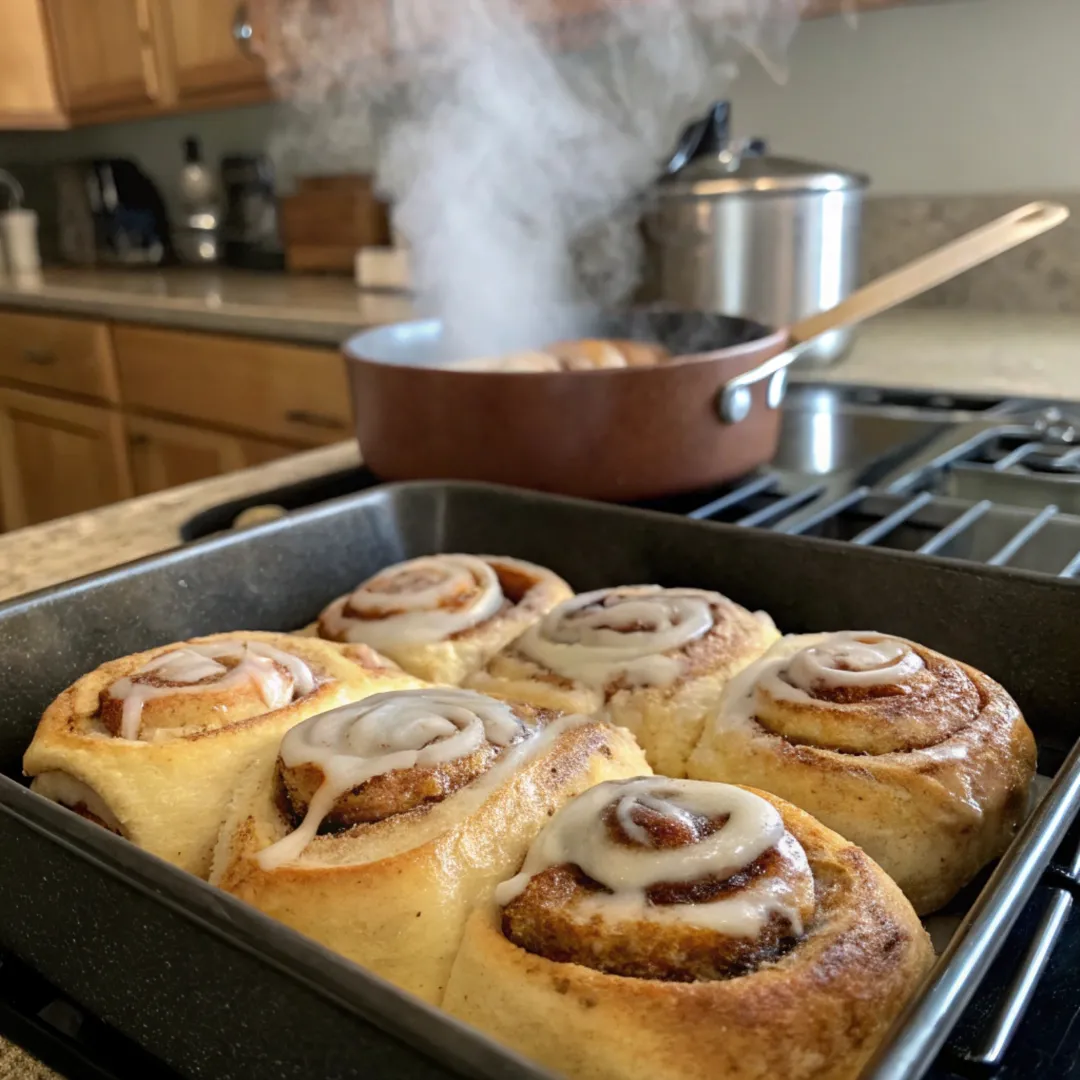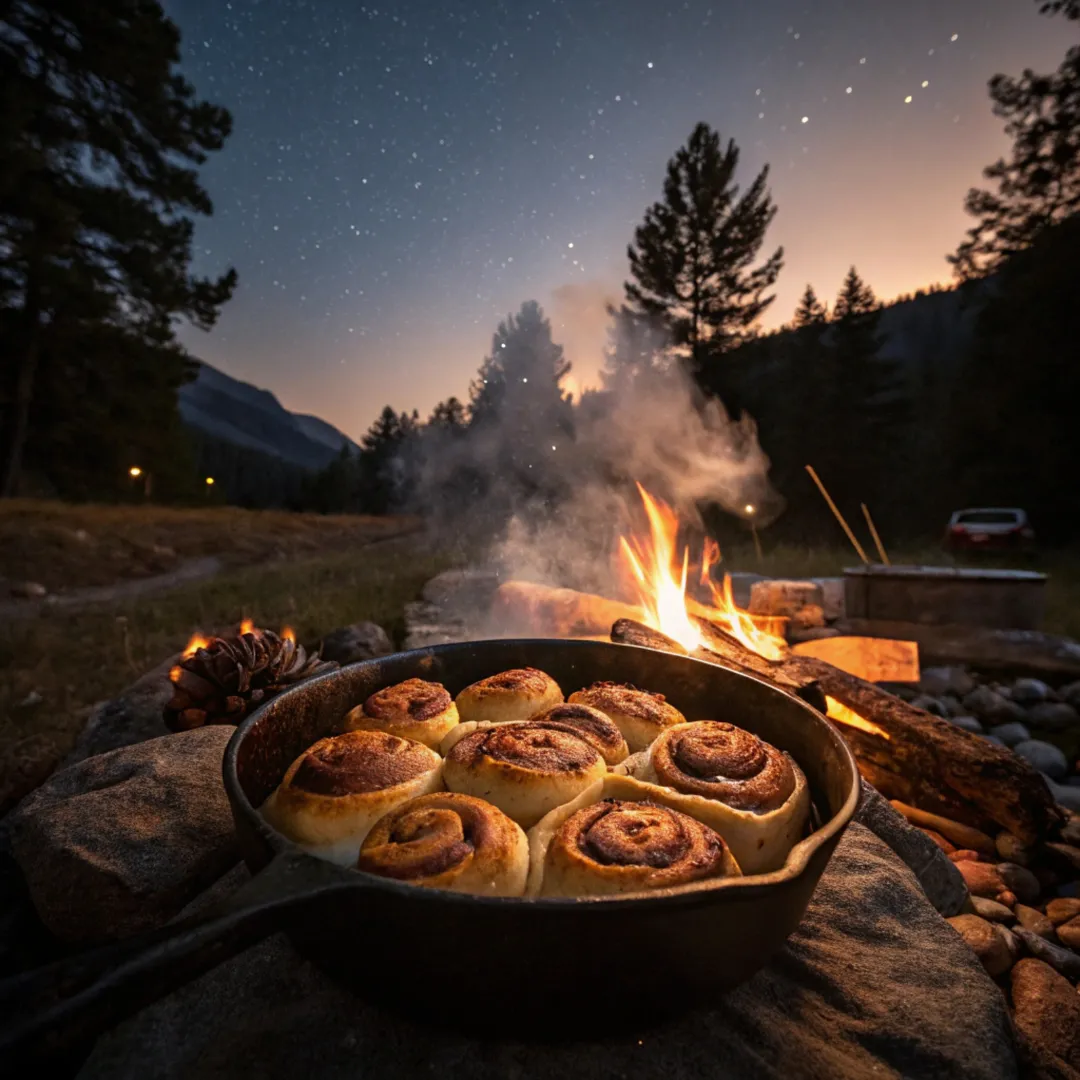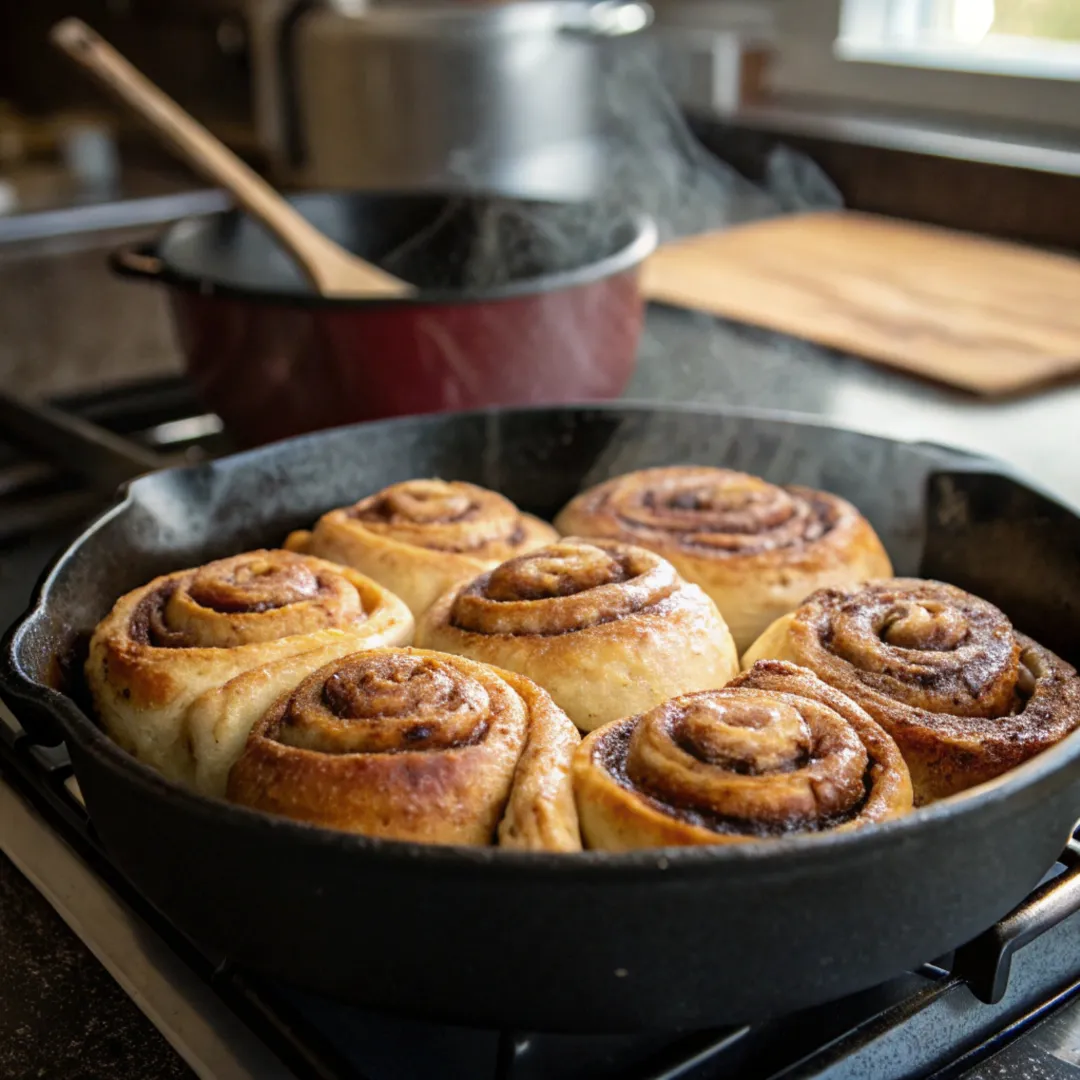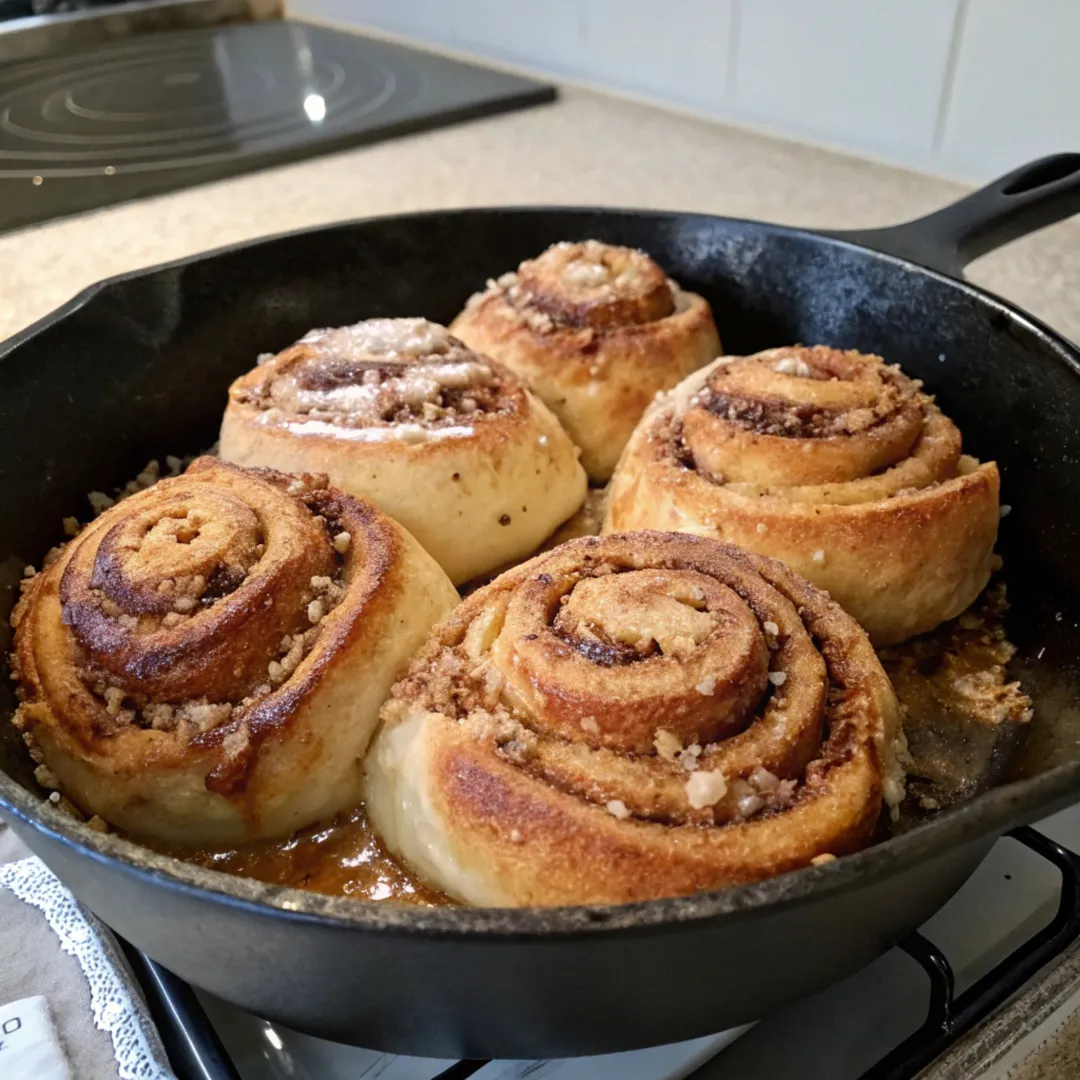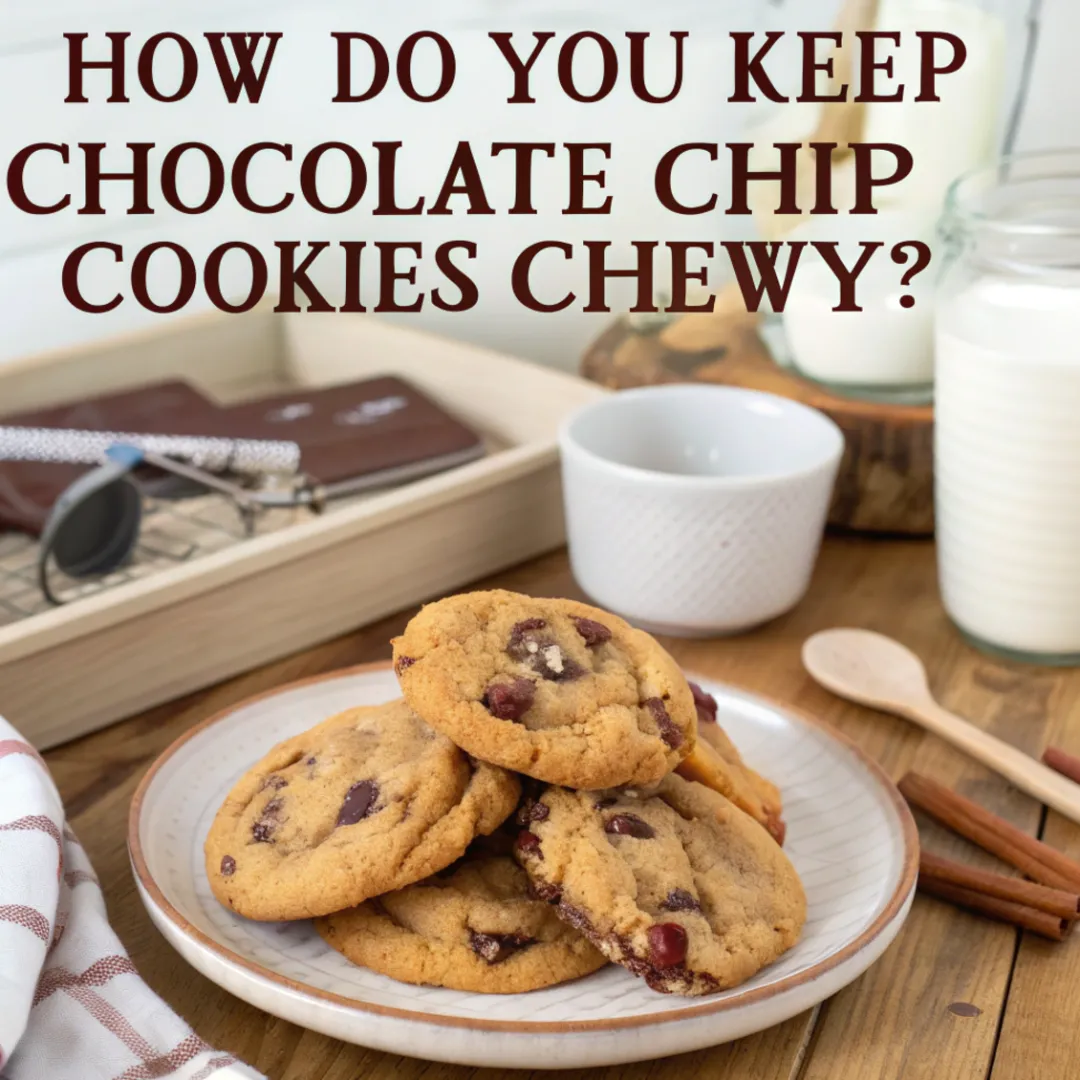
Introduction to Chewy Chocolate Chip Cookies: Why Chewy Beats Crispy Every Time
There’s just something magical about biting into a chocolate chip cookie and sinking your teeth into that soft, gooey, melt-in-your-mouth goodness. So, how do you keep chocolate chip cookies chewy? That’s the million-dollar question for home bakers and cookie connoisseurs everywhere.
Chewy cookies are the gold standard. They’re the ones that bring back childhood memories, that perfect balance between soft and decadent with a slight resistance. Crispy edges might have their moment, but chewy centers are where the heart is. And let’s face it—nothing beats the smell of warm, freshly baked cookies wafting through the kitchen.
But chewiness doesn’t happen by accident. It’s a blend of the right ingredients, precise baking techniques, and even how you store your cookies afterward. If you’ve ever asked yourself, “How do you keep chocolate chip cookies chewy?”, buckle up—we’re diving deep into 20 expert-backed tips to ensure every batch you bake is as chewy and delicious as your favorite bakery’s.
The Science Behind How to Keep Chocolate Chip Cookies Chewy
Before we even crack an egg or preheat the oven, it’s crucial to understand the science behind chewy cookies. That’s right—cookie texture isn’t just about taste; it’s about chemistry.
Moisture Is Everything
One of the top answers to “How do you keep chocolate chip cookies chewy?” is moisture retention. The more moisture your dough has and keeps while baking, the chewier the final product will be. Ingredients like brown sugar, extra egg yolks, and even chilling the dough help lock in this essential element.
Protein and Gluten Matter
Another secret to chewiness lies in gluten—the protein that forms when flour meets liquid. The more protein (gluten) you develop, the more your cookie can stretch and hold together without crumbling. This is where ingredients like bread flour come into play, which we’ll get into shortly.
Heat Timing and Texture
Believe it or not, the temperature you bake your cookies at—and for how long—affects how chewy they turn out. Lower temps and shorter bake times lead to softer, more pliable cookies. Overbaking dries them out, making them hard and crumbly.
So next time you’re wondering, “How do you keep chocolate chip cookies chewy?”, remember: it’s all about moisture, gluten, and timing.
Key Ingredients That Answer “How Do You Keep Chocolate Chip Cookies Chewy?”
You’ve got the science, now let’s talk ingredients. Your pantry staples can either make or break the chewiness of your chocolate chip cookies.
Use Bread Flour Instead of All-Purpose Flour for Chewier Cookies
If chewiness is your goal, ditch the all-purpose flour and reach for the bread flour. Why? Bread flour contains more protein—up to 13%—compared to all-purpose, which hovers around 10-11%. More protein equals more gluten, and more gluten equals more chew.
How to Use It:
You can swap out all the flour in your recipe or just use half bread flour and half all-purpose. This hybrid approach gives you a balance of chew and softness without being too dense.
Why It Works:
The gluten structure created by bread flour gives cookies their stretch and pull. It’s that “tear-away” factor you feel when you break a cookie in half. If you’ve ever eaten a chewy New York-style cookie and wondered how they do it, chances are bread flour played a role.
Still asking, “How do you keep chocolate chip cookies chewy?” Start here. This one change can make a dramatic difference in your results.
Add Extra Egg Yolk to Maximize Chewiness
Eggs are multifunctional in baking—they bind ingredients, provide moisture, and add fat. The yolk specifically brings richness and a custard-like texture to your dough.
Pro Tip:
For an extra-chewy cookie, add an extra yolk to your dough while keeping the white out. This amps up the fat content, giving the cookie a more tender bite.
What It Does:
The fats in egg yolks emulsify the dough and lock in moisture. When combined with sugars and flours, this creates a luxurious, chewy interior. It’s a subtle tweak, but the payoff is huge.
So, how do you keep chocolate chip cookies chewy? One yolk at a time.
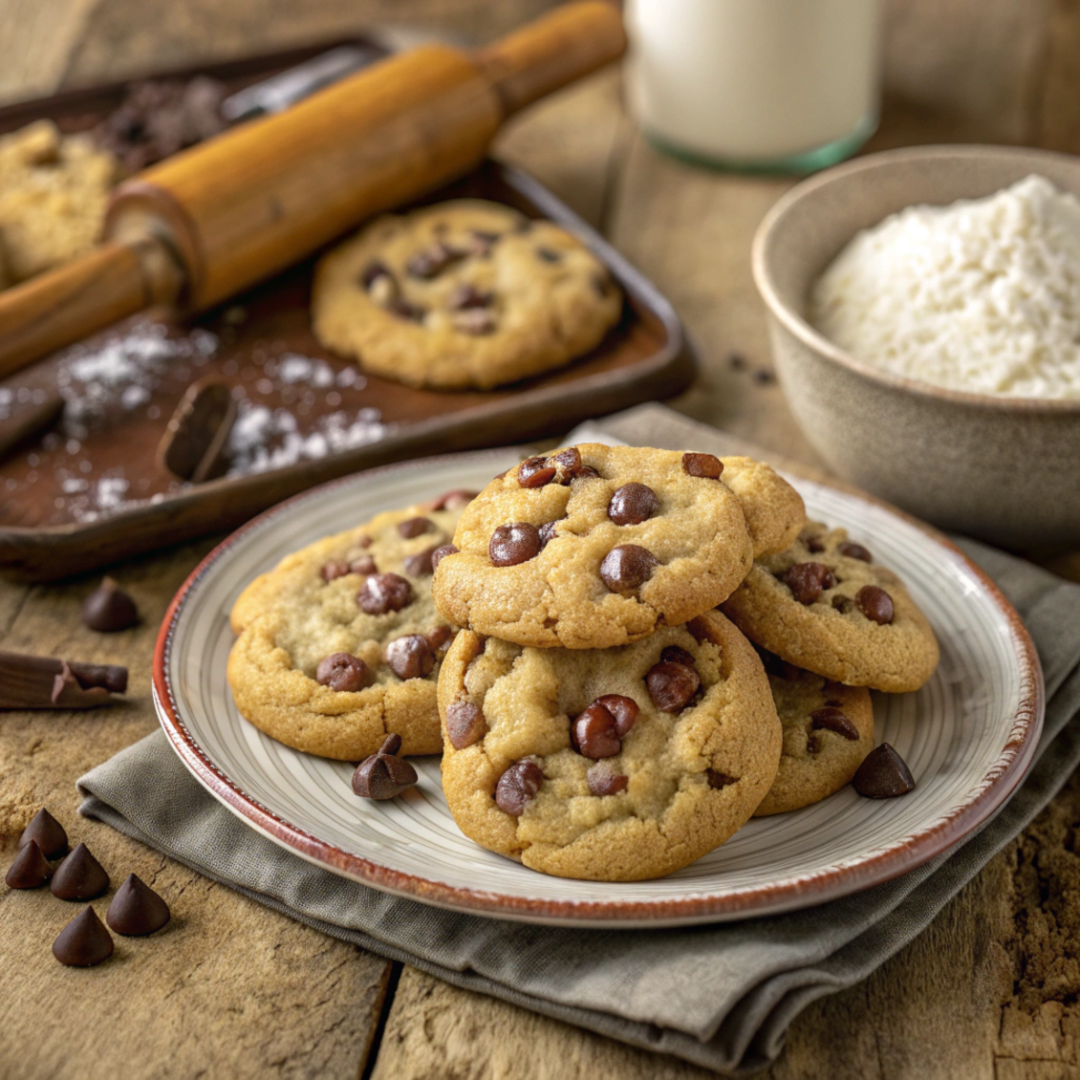
Use More Brown Sugar Than White Sugar
Want chewy cookies? Go heavy on the brown sugar. It contains molasses, which is hygroscopic (that’s a fancy way of saying it attracts moisture). More moisture = more chew.
The Perfect Ratio:
Many classic cookie recipes use a 1:1 ratio of white to brown sugar. To lean toward chewiness, flip the script—use 2:1 brown to white.
Light vs. Dark Brown Sugar:
Both work, but dark brown sugar has more molasses, making your cookies even richer and chewier.
Next time you’re pondering, “How do you keep chocolate chip cookies chewy?”, remember: the sugar swap is a sweet trick with major results.
Incorporate Cornstarch for Thick and Chewy Cookies
Cornstarch may be the unsung hero of cookie baking. It tenderizes the dough without watering it down, giving you thick, plush cookies that stay soft for days.
Why It’s a Game Changer:
Cornstarch slows gluten development, keeping your cookies soft. It also adds just enough structure to create a thick, chewy bite without drying them out.
How Much to Use:
Try 1 to 2 teaspoons per cup of flour. Mix it directly into your dry ingredients.
If you’re still asking, “How do you keep chocolate chip cookies chewy?”, sprinkle in some cornstarch and taste the difference.
Game-Changing Baking Techniques to Keep Chocolate Chip Cookies Chewy
If you’ve already nailed down your ingredients, it’s time to look at your process. Sometimes, it’s not what’s in the cookie—it’s how you bake it. So, again we ask: How do you keep chocolate chip cookies chewy? The answer continues right here with pro-level baking methods.
Chill the Dough Before Baking for Enhanced Chewiness
This tip is a game-changer and one of the most overlooked steps in home baking. Chilling your cookie dough for at least 2–3 hours (overnight is even better) helps develop flavor and improves the cookie’s structure.
How Chilling Helps:
- Fats solidify, so your cookies spread less while baking.
- Flour hydrates, giving your cookies a thicker, chewier interior.
- Sugar absorbs more moisture, which caramelizes beautifully in the oven.
Skipping this step often leads to thinner, crispier cookies. If you’re truly dedicated to answering the question, “How do you keep chocolate chip cookies chewy?”, this step is non-negotiable.
Quick Tip:
If you’re short on time, even 30 minutes of chilling is better than none. Scoop your dough into balls, chill, and then bake—no need to wait hours every time.
Use Melted Butter to Add Depth and Chew
Butter is another crucial ingredient in answering the burning question: How do you keep chocolate chip cookies chewy? But not just any butter—melted butter.
Why Melted Butter Works:
When butter is melted before being mixed with sugar and eggs, it leads to a denser dough that spreads less and maintains moisture. The texture becomes softer, more pliable, and deliciously chewy.
Tips for Using Melted Butter:
- Let the butter cool slightly before adding it to your eggs—this keeps them from scrambling.
- Beat the melted butter and sugars thoroughly to create a thick, smooth base.
This small tweak can have a big impact on your final results.
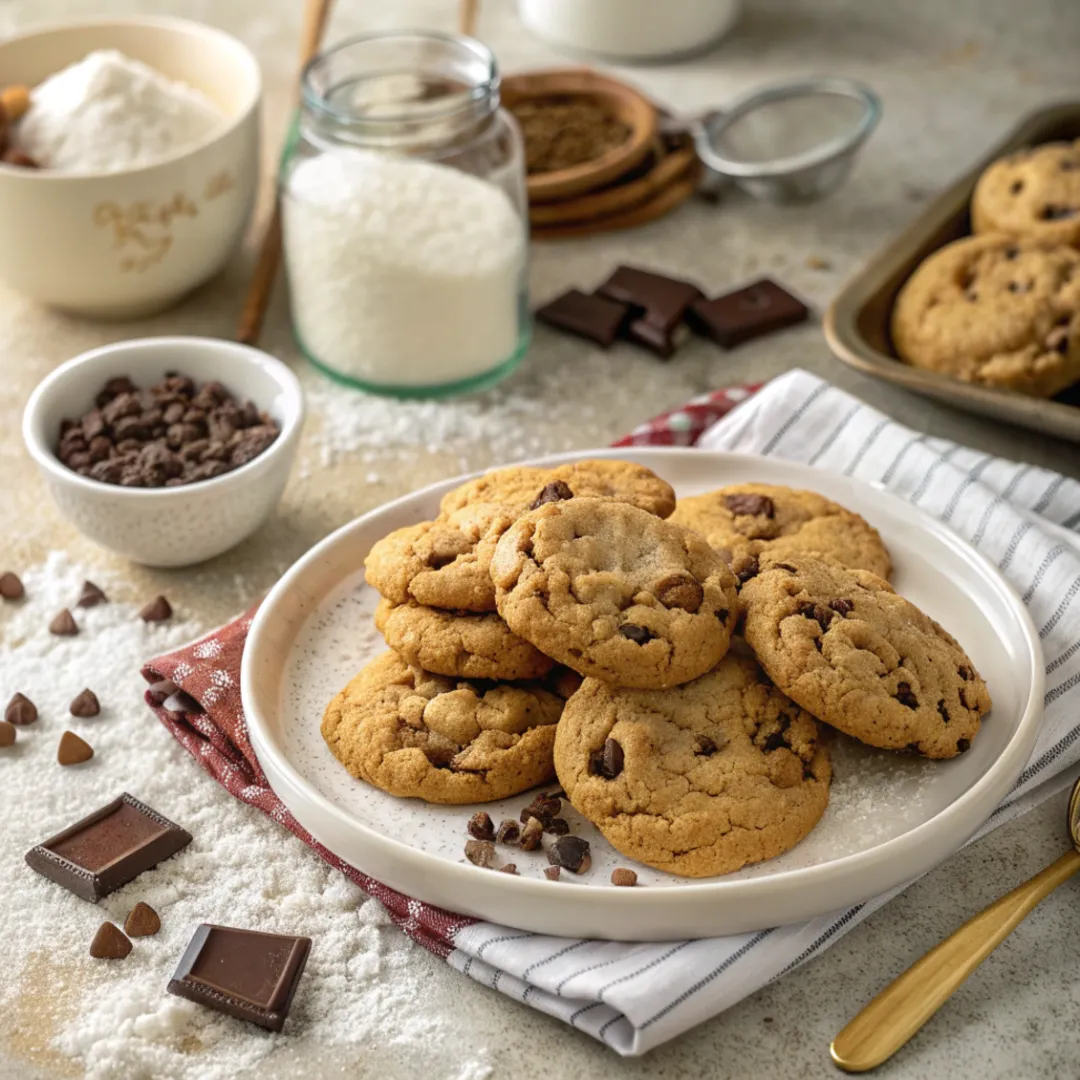
Underbake Slightly to Lock in Moisture
Let’s get something straight: golden-brown edges do not mean your cookies are done. In fact, slightly underbaking is one of the best ways to ensure your cookies stay chewy after cooling.
Here’s Why It Works:
Cookies continue to cook on the hot baking sheet even after they’ve been removed from the oven. If you wait until they look completely baked, you’re overbaking them by a few minutes. This leads to crunchy, dry results.
When to Pull Them Out:
- The edges should look firm, but the centers should still appear slightly soft or even underdone.
- Let them sit on the hot baking sheet for 5–10 minutes to finish setting.
Still wondering, “How do you keep chocolate chip cookies chewy?” Take them out before they look ready—it’s the secret that bakers swear by.
Bake at a Lower Temperature for Optimal Texture
Most cookie recipes call for 350°F, but if you really want to master how to keep chocolate chip cookies chewy, try baking at 325°F to 335°F instead.
Why Lower Temps Matter:
- They allow the cookies to bake more evenly.
- The outside doesn’t crisp up as fast, giving the inside time to set into that perfect chewy consistency.
- Lower heat reduces moisture loss.
You might need to add 2–3 extra minutes to your baking time, but the chewy payoff is worth every second.
Post-Baking Storage Secrets: How Do You Keep Chocolate Chip Cookies Chewy for Days?
Okay, you’ve mixed, chilled, and baked the perfect batch. But here’s the kicker: how do you keep chocolate chip cookies chewy after they’ve cooled? Because nobody wants to bite into a dry, rock-hard cookie the next day.
Let’s look at how to lock in that chewiness even after baking.
Store Cookies with a Slice of Bread for Long-Lasting Chewiness
This might sound strange, but it’s pure cookie wizardry: storing your cookies with a slice of plain white bread can help keep them soft and chewy for days.
How It Works:
- Bread naturally releases moisture.
- Cookies absorb that moisture while sitting in the same airtight container.
- Result? Soft, bakery-style cookies every time you open the lid.
What Kind of Bread to Use:
Stick to soft, white sandwich bread. Strongly flavored or crusty breads can transfer odd tastes or textures to your cookies.
If you’ve ever caught yourself muttering, “How do you keep chocolate chip cookies chewy for more than a few hours?”, this one simple trick could be your best-kept secret.
Use Airtight Containers to Prevent Moisture Loss
One of the biggest cookie-killers is air. Leave those babies exposed to the elements, and they’ll dry out faster than you can say “milk and cookies.”
Best Storage Practices:
- Use an airtight plastic or glass container with a rubber seal.
- Layer cookies with parchment paper between them to prevent sticking.
- Keep them at room temperature—never in the fridge!
Refrigeration may seem like a safe bet, but it actually sucks the moisture out of your cookies. For the best chewy results, store them right, and snack often.
Avoid These Common Mistakes If You Want Chewy Cookies Every Time
So far, we’ve covered what to do. Now let’s talk about what not to do. These cookie sins can destroy even the most well-intentioned chewy cookie dreams. If you’ve ever wondered how do you keep chocolate chip cookies chewy and fail, chances are one of these mistakes was involved.
Don’t Overbake Your Cookies—Ever
It bears repeating: once you overbake, there’s no going back. Overbaking dries out your cookies, and all the brown sugar or cornstarch in the world can’t save them after that.
Fix:
Use a timer. Set it for 1–2 minutes earlier than the recipe suggests. Peek early and often.
Avoid Using Only White Sugar
White sugar lacks molasses and therefore doesn’t retain moisture like brown sugar does. Cookies made with 100% white sugar are prone to crispiness and fast drying.
Fix:
Adjust your sugar ratio. For chewier results, go for 70% brown sugar, 30% white.
Don’t Skimp on Measuring Flour Properly
Using too much flour is a common baking blunder. Too much flour = dry, cakey, crumbly cookies.
Fix:
Spoon your flour into the measuring cup and level it off with a knife. Never scoop directly with the cup—that compresses the flour and throws off your whole dough.
The next time someone asks, “How do you keep chocolate chip cookies chewy?” don’t just share the hacks—warn them about the traps too!
Pro Baker Tips: How Do You Keep Chocolate Chip Cookies Chewy Like a Pro?
Let’s round out this chewy cookie guide with some gold-plated advice from the cookie elite—professional bakers who churn out chewy perfection on the daily.
Weigh Your Ingredients for Consistency
Every seasoned baker will tell you that precision is everything. Volume measurements can vary wildly, but a kitchen scale ensures your flour, sugar, and mix-ins are always spot on.
Use Dark Brown Sugar for Maximum Chew
Light brown sugar works well, but dark brown sugar has more molasses, which boosts moisture content and gives your cookies that rich, deep flavor—and yes, more chew.
Double Up on Vanilla for Better Texture and Flavor
Vanilla doesn’t just flavor your cookies—it softens them. A bit of extra extract can go a long way toward tenderizing the dough while amping up the taste.
Consider Adding a Spoonful of Honey or Molasses
These liquid sweeteners help with moisture retention and add a subtle complexity to your cookies. Just don’t overdo it—1 tablespoon per batch is plenty.
Try Mixing Different Types of Chocolate
Mix semisweet chips with dark chunks or milk chocolate for a rich, melty contrast. While this doesn’t directly impact chewiness, it definitely enhances the experience of each chewy bite.
Conclusion: Master the Art of Chewiness Once and for All
There you have it—20 tried-and-true techniques to master the art of the chewy chocolate chip cookie. No more guesswork, no more crispy surprises. The next time you hear someone wonder, “How do you keep chocolate chip cookies chewy?” you’ll know exactly what to tell them.
From ingredient swaps to baking hacks and storage secrets, achieving that perfect chewy texture is all about making intentional choices at every step. Want cookies that stay soft for days? Use bread flour, brown sugar, an extra egg yolk, and don’t skip that chill time. Want bakery-level goodness? Store them smart and never overbake.
Go ahead—preheat that oven. Your perfect chewy chocolate chip cookies are just one batch away.
FAQs
1. What makes cookies soft and chewy instead of crispy?
High moisture content, extra fat (like egg yolks and butter), and lower baking temperatures all contribute to chewy, soft cookies rather than dry, crispy ones.
2. Can I make chewy cookies without brown sugar?
Brown sugar helps, but you can substitute with white sugar + molasses. However, using only white sugar usually leads to crisper cookies.
3. Is it okay to chill cookie dough overnight?
Absolutely. Chilling overnight enhances flavor, texture, and structure—making cookies even chewier.
4. How do I re-soften cookies that have gone hard?
Place a slice of bread in the storage container, or microwave the cookie with a damp paper towel for 10–15 seconds.
5. What’s the best flour for chewy cookies?
Bread flour is ideal because of its higher protein content, which helps form more gluten—key for that chewy texture.
